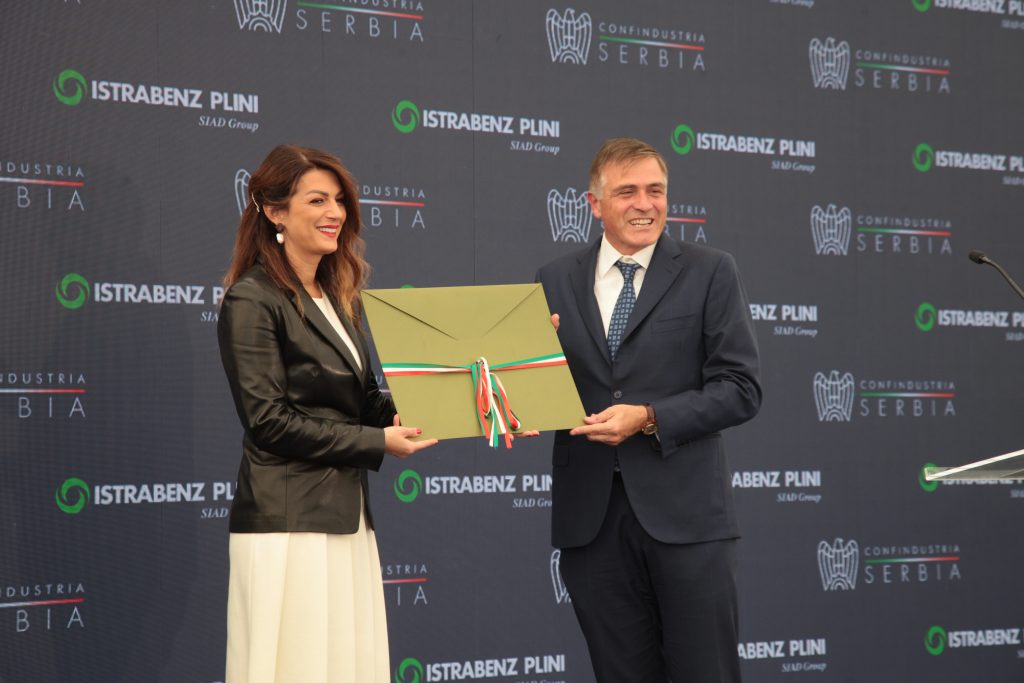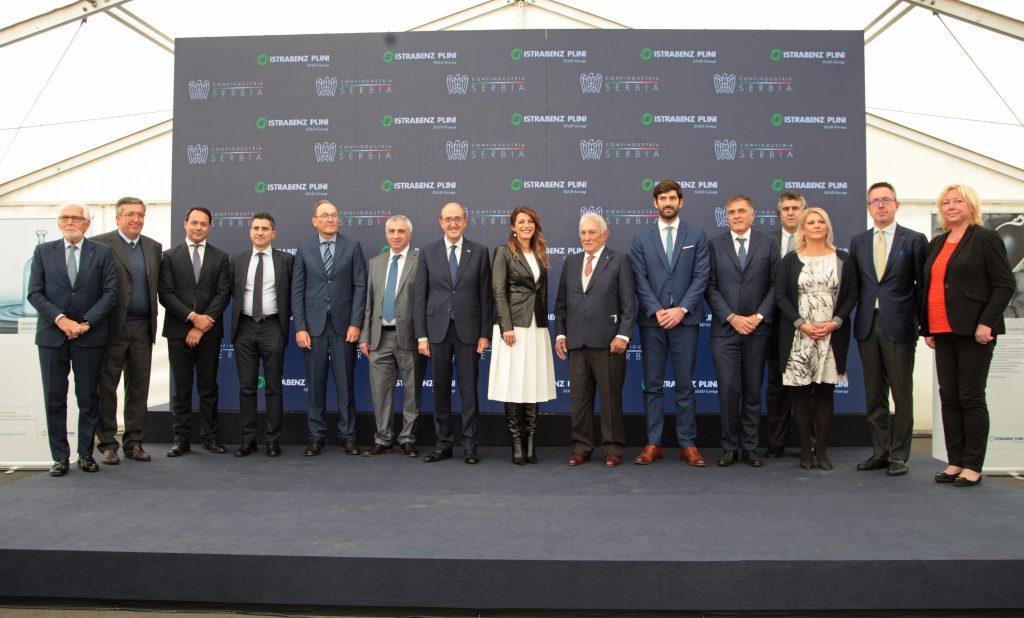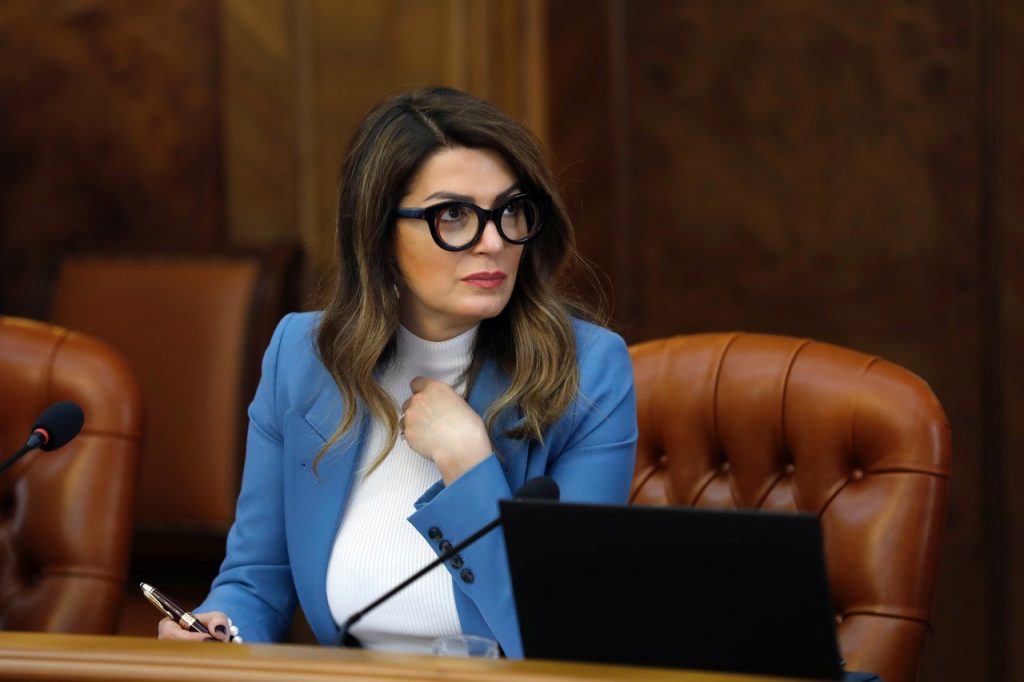Economic cooperation and especially the trade between Serbia and Italy are at an extremely high level, which is supported by the fact that the trade value has ranged between 3.4 billion and 4 billion euros in the last eight years.
The Ministry of Trade, Tourism and Telecommunications recognizes the great potential in improving cooperation with Italy, primarily in the segment of spa tourism and thematic tourist routes. Finding strategic partners from Italy that are willing to invest in spas in Serbia, as well as share their experience in spa tourism, would contribute to improving our offer of this tourist product. Also, the valuable experiences of Italy in cultural heritage-based tourism are of great importance, especially for advancing the cooperation on cultural and tourist routes under the auspices of the projects implemented by the Council of Europe.

The COVID-19-induced crisis has slowed down tourism, but the Serbian state has been working on incentives for this industry. What do you expect to happen in this sector in 2022?
After a great start at the beginning of 2020, when the number of tourists and the total number of overnight stays increased in January and February, we expected a record tourist year in the Republic of Serbia. However, due to the COVID-19 pandemic, the number of foreign tourists fell by more than 90%. After the state of emergency ended, domestic tourism was the first to recover, and 2020 was marked by domestic tourists. This trend continued in 2021, which contributed to the affirmation of new tourist destinations and provided an opportunity to see the shortcomings in these destinations, but also to implement the necessary measures to further improve the quality of our tourist products and services.
Throughout the pandemic, Serbia has been promoted as a tourist destination. The promotional activities mainly focused on domestic tourism, but also on tourists from the region to whom Serbia is an accessible destination by car. The comprehensive digital campaign is also aimed at tourists from Bulgaria, Germany, Spain, France, Hungary, Italy, North Macedonia, Romania, Russia, Turkey and the USA. During the pandemic, the line Ministry and the Serbian government have been investing an extraordinary effort into mitigating as much as possible the losses in the tourism and hospitality sector. The key goal at the moment is to preserve jobs in the tourism sector as much as possible so that we can be prepared for faster recovery once the demand from our leading emitting markets starts growing. When that happens, we need to continue investing in the development of the general tourist infrastructure.
A large number of Italian SMEs operating in Serbia come from the manufacturing sector and are export-oriented
Given that, in 2021, Serbia had the opportunity to welcome more foreign tourists than in 2020, and that the foreign currency revenues from tourism in the first 9 months of this year amounted to 1.15 billion, the focus of the tourism sector is on further improving Serbia’s image on the international tourism market. When it comes to domestic tourists, the goal is to further promote new tourist destinations and keep domestic tourists in the country. I am confident that tourism in Serbia will experience a huge boom in the coming years, and the line Ministry will certainly continue to provide wholehearted support and work on improving Serbia’s tourist offer.

What is the tourism cooperation with Italy like?
The Republic of Italy and the Republic of Serbia have had traditionally good cooperation in tourism and I am extremely pleased to see a growing trend of arrivals and overnight stays of tourists from Italy, as evidenced by data which show that in the first 9 months of 2021, Serbia was visited by 13,211 tourists and a total of 37,986 overnight stays were recorded, which is a significant increase compared to the same period in 2020.
We have also launched the SUSTOURISMO (Sustainable Tourism & Mobility Hand-by-Hand Development) project, which goal is to generate innovative and environmentally friendly tourism formats with lower pollutant emissions, as well as increase the share of environmentally friendly transport modes. In addition to this, one of the project’s goals is to develop an application for smartphones called SUSTOURISMO, which function will be to raise tourists’ awareness about sustainability and responsibility, as well as in making responsible travel choices.
How far have we come with the digital transformation of society and the project of joint construction of a broadband communication infrastructure?
The digital society in the Republic of Serbia is expanding, as evidenced by the data which show that 81% of households have an Internet connection, as well as that 78.4% of citizens use the Internet.
Capital projects implemented by the Ministry of Trade, Tourism and Telecommunications on the development of infrastructure will further expedite the online involvement of citizens. In June 2020, a new project aimed at developing broadband access in rural areas was launched, which goal is to provide support to private sector investments in rural areas. During the first phase of the project, which is already underway, the Ministry will ensure that public institutions, primarily elementary schools in certain rural areas have a connection to the existing optical network framework. This is an incentive for the private sector to develop last-mile infrastructure for surrounding households and makes operator’s investments financially sustainable.
The second phase of the project of developing broadband access in rural areas consists of two parts. The first part envisages an infrastructure construction model, just like in the first phase. Namely, the Ministry will build the middle-mile segment, and the operators will build the last-mile infrastructure. Furthermore, during the second part of the second phase, the line Ministry, i.e. the Serbian government, will fund the construction of the complete infrastructure which will be made available to electronic communications operators.
The development of digital skills and competencies of all population categories is also one of the priorities of the Ministry of Trade, Tourism and Telecommunications
Also, one of the Ministry’s most important projects is the Connected School project, which creates equal opportunities and ensures the further development of education for all students via the development of ICT infrastructure for educational institutions. A wireless local network has already been built in over 900 school buildings throughout Serbia, and the plan is to install this network in all schools in Serbia. Today, over 1,600 schools in Serbia have been provided with broadband access, and by the end of this year, all school facilities, i.e. close to 4,000 main and auxiliary facilities, will have broadband access. In this way, over 60% of students in Serbia have already been provided with Internet access in a safe environment of the Academic Network of the Republic of Serbia.
The development of digital skills and competencies of all population categories is also one of the priorities of the Ministry of Trade, Tourism and Telecommunications. The Republic of Serbia was the first country in the region to adopt the Digital Skills Development Strategy that covers the period from 2020 to 2024. As it is necessary to support the development of digital skills and competencies parallel with the development of infrastructure and digital services, the Ministry annually allocates funds to support programmes aimed at improving digital literacy and digital competencies, such as supporting women in rural areas and educating both children and parents how to safely use the Internet and modern technologies.

What do you think the Government’s results and accomplishing the set goals will be like next year? Do you think that the pandemic will slow down development and reforms?
First and foremost, the pandemic has drastically affected our health, traffic, tourism and economic sectors. I believe that the Government of the Republic of Serbia has demonstrated that even in the most difficult, crisis moments, we are ready to adequately respond to challenges on short notice and make the people in Serbia feel safe and supported by their country. Despite the difficult situation, economic stability has been achieved, jobs have been preserved, and we have an increase in salaries and pensions, which is a great success for Serbia, a country that is still developing. The most important thing that the Government of the Republic of Serbia is working on the increase in the foreign investments influx, the implementation of new infrastructure projects, and the commitment to furthering Serbia’s accession to the EU. I believe that we are on the right path and that we will successfully cope with all future challenges.

How would you rate the cooperation between Serbia and Italy, and how much do Italian investments mean to us?
Italy is one of the leading economic partners of Serbia, which, considering the total trade, ranked second in 2020 and third this year (January – September). At the same time, it is the second-biggest export market for our goods, while in terms of the value of imported goods, Italy ranks third. Furthermore, Italy occupies ninth place in terms of the export of services from Serbia and is one of the most important foreign investors in the Serbian economy. FI-AT’s investment in the car factory in Kragujevac, as the largest Italian investment in the manufacturing sector, has greatly contributed to the opening of branches of numerous companies from the automotive industry, both from Italy and other countries.
In addition to the automotive industry, the Italian investors are present in the textile and footwear industry, machine-building, metal processing and electrical industry, construction and food industry, and also in the IT sector. A large number of Italian SMEs operating in Serbia come from the manufacturing sector and are export-oriented. It is extremely important for our country that these are often labour-intensive productions which, as a rule, create numerous new jobs. In recent years, there has been a tendency to expand existing production capacities with additional investments.